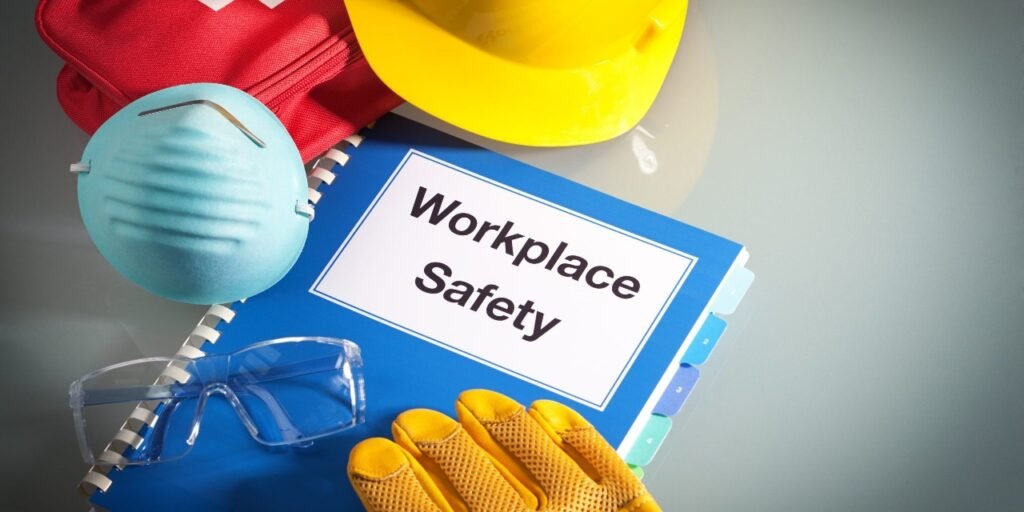Are you aware of the potential hazards in various workplaces? Have you considered how proper safety equipment can minimise these risks? In many industries, personal protection is essential to ensure the well-being of employees. Not only does safety equipment prevent injuries, but it also promotes a sense of security among workers, allowing them to focus on their tasks without unnecessary worry.
Incorporating work safety gear into daily operations is critical for both employees and employers. This gear protects individuals from injuries and contributes to maintaining a safe environment overall. Below are some key types of protective equipment and why each one plays a vital role in different settings.
1. Head Protection: Safeguarding Against Impact
Head injuries can occur in various workplaces, especially on construction sites and in factories. Hard hats and helmets are essential for shielding the head from falling objects, impacts, or electrical hazards. These protective items help absorb shock and prevent head injuries that could otherwise be severe.
Wearing head protection also ensures compliance with industry standards, which typically mandate such gear in high-risk areas. Helmets are often designed to be adjustable, making them comfortable for prolonged use, while offering reliable protection. Ultimately, a well-fitted helmet can make a significant difference when it comes to head safety.
2. Eye and Face Protection for Critical Situations
Many work environments pose risks to the eyes and face, such as exposure to chemicals, flying debris, or harmful rays. Safety goggles and face shields are commonly used to guard against these dangers. Goggles protect the eyes, while face shields offer broader coverage for the entire face.
Using protective eyewear reduces the chance of injuries like burns, cuts, and even vision loss. Workers in industries such as manufacturing and welding often rely on these tools. For tasks involving hazardous materials, eye protection is indispensable, ensuring that workers remain safe and productive.
3. Ear Protection to Preserve Hearing
Noise pollution is a common issue in workplaces such as factories, airports, and construction sites. Prolonged exposure to loud noises can lead to hearing loss, which is often permanent. Earplugs and earmuffs are designed to block or reduce noise levels, preventing damage to hearing.
Hearing protection varies based on the noise intensity and the type of work involved. In environments where decibel levels are particularly high, earmuffs are recommended as they offer more comprehensive coverage. By investing in proper ear protection, companies can help employees maintain their hearing health over the long term.
4. Respiratory Gear for Airborne Hazard Protection
Airborne contaminants like dust, fumes, and toxic vapours pose serious risks in many industries. Respiratory gear, such as masks and respirators, helps filter harmful particles from the air, ensuring that employees breathe safely. This is particularly important in sectors like construction, mining, and chemical manufacturing.
Respiratory protection comes in various forms, from simple dust masks to more advanced respirators with built-in filters. When selecting this equipment, it’s crucial to consider the specific airborne hazards present. By choosing appropriate respiratory gear, employers can significantly reduce the health risks associated with poor air quality.
5. Hand Protection: Avoiding Cuts, Burns, and Chemical Exposure
Hands are vulnerable to numerous hazards, from sharp tools to extreme temperatures and chemical substances. Gloves serve as the primary form of protection, with different types available depending on the risks involved. For instance, heavy-duty gloves are suitable for construction work, while chemical-resistant gloves are ideal for handling hazardous substances.
- Leather gloves: Best for handling rough materials and protecting against abrasions.
- Heat-resistant gloves: Suitable for work involving high temperatures, like metalwork or welding.
- Cut-resistant gloves: Designed for jobs requiring the handling of sharp objects.
By providing suitable gloves, employers can ensure that workers’ hands are protected from injuries. This, in turn, reduces downtime due to accidents and enhances overall productivity.
Work safety gear plays an indispensable role in various industries. By providing essential protection, this gear helps mitigate risks and promotes a secure environment. Safety measures are vital for enhancing productivity and well-being in the workplace, making it a worthwhile investment for any organisation.


